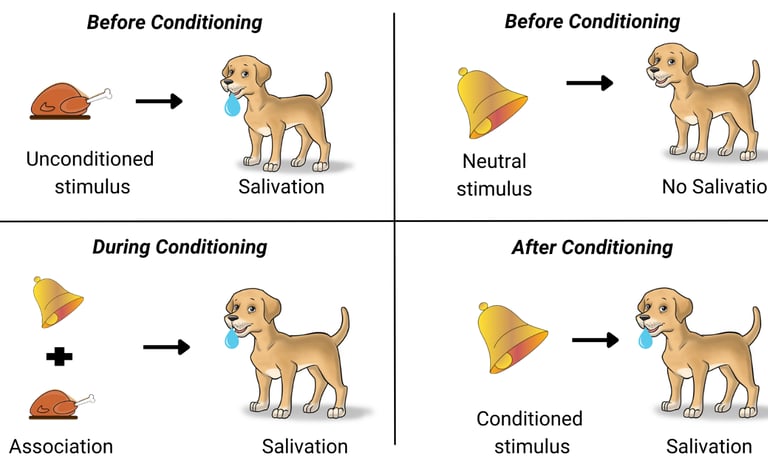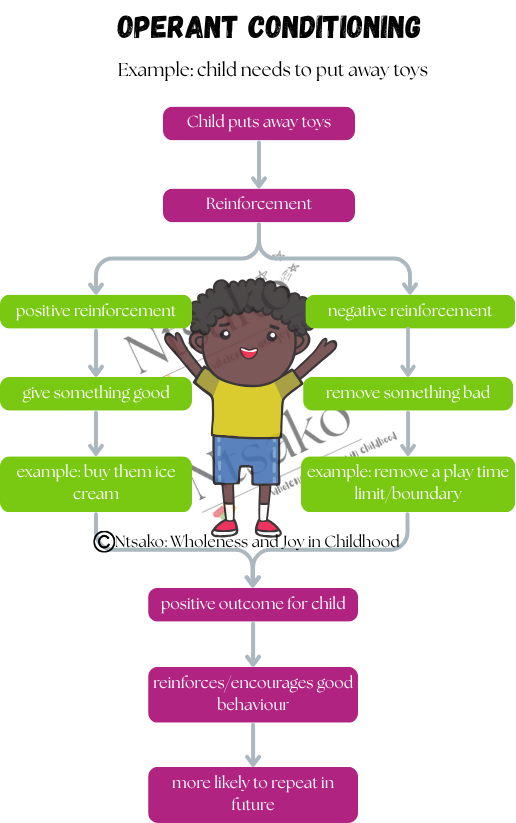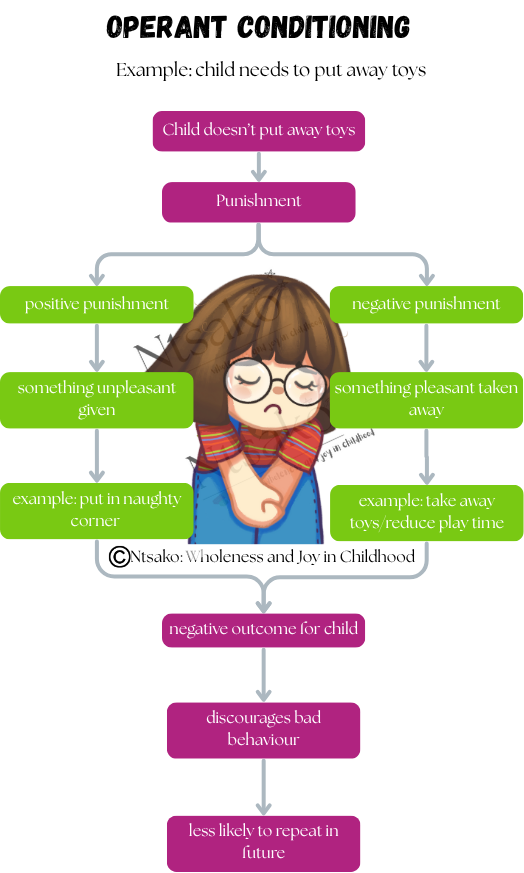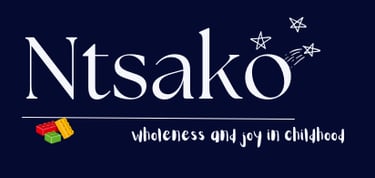
The First Major Learning Theory: Conditioned Learning
3.3.1. Looking at some of the earliest theories of how we learn, Pavlov and Skinner
ISSUE 3
VJ Tlakula
6/26/20256 min read


Conditioning as Learning
Psychologists assert that most of human behaviour has been learned (ref Part 2).
According to Field (2000), learning is a change in knowledge or behaviour due to experience. It is a lifelong process, requiring an accumulation and integration of knowledge, with knowledge constantly building on itself. Learning is not necessarily permanent, so it can be changed. Conditioning, which we're discussing here, is a form of experience-based learning. Through conditioning, we see how learning is tied to the environment’s input and response.
Theories on conditioning are solely behaviour-based. It’s all about a stimulus and an outcome and does not consider cognition and thinking much. There are two types of conditioning: Classical Conditioning (promoted by Pavlov) and Operant Conditioning (promoted by Skinner). Classical conditioning is concerned with introducing the stimulus before the behaviour, while operant conditioning brings the stimulus after the behaviour.
I like to think of Ivan Pavlov and B.F. Skinner as the two original learning theorists. They believed that you could direct or shape someone’s behaviour by creating a link between a preceding or proceeding unrelated stimulus (event/object) and their actions. This training, called conditioning, trains the mind to associate a specific stimulus with a specific outcome (e.g. a bell that signifies food, or receiving food for doing a good deed). Even though the stimulus on its own isn't meaningful or related, the brain learns that it is just because of how closely the two events occur. Conditioning requires consistency and timeliness, meaning that the stimulus must repeatedly come very soon before or after behaviour for association and, therefore, learning to happen.
The goal of conditioning is training someone to behave in a desired way in relation to their environment. This can be good or bad, either forming good habits (Issue 3 Part 1) and reversing phobias, or controlling people and creating submission and fear. As a learned response which exploits a human’s natural biological responses (reflexes, desires), it can happen at any point of life.
At the most basic level, conditioning is constantly happening in our lives, we expect that certain preceding events signal something coming or that specific events/behaviour lead to certain outcomes. We almost expect or anticipate them quite naturally. Our society functions based on the implicit or explicit knowledge of cause and effect in many ways. When someone has learned to expect a certain outcome, we say that they've been conditioned.
Let me explain a bit more.
Classical Conditioning - Ivan Pavlov
Classical conditioning was put forth by Pavlov, who studied animal responses. He learned that if he rang a bell just before giving dogs food enough times, he could train their brains to produce saliva just at the sound of a bell even without the presence of food. This was because their brains came to associate the sound of the bell with food, and they automatically salivated when they saw/smelled/tasted food. This a physical reflex (salivating) was created by repeated neutral, unrelated event (a bell ringing).
So, classical conditioning uses the body’s biological automatic reflexes to produce the response, and it deals with the external influence occurring before the desired behaviour. This theory states that if you use a stimulus which naturally produces a certain response (food), together with another, unrelated stimulus (a bell) repeatedly, through association, you can train a brain to respond to the unrelated stimulus (the bell) the same way it would to the original (food) even without the presence of the original.
Example: Conditioning someone to cry at the word “sprinkles”
Perhaps if you pinch someone they will cry. Crying is a natural response to feeling pain. But when you say the word “sprinkles”, a person is not meant to cry because there is nothing about the word sprinkles that should make them cry. These two events are completely unrelated. But if you say the word “sprinkles” and then pinch the person, they will cry because of the pain of pinching them. If you say “sprinkles” and pinch them over and over, they will begin to associate the word “sprinkles” with the pain of pinching.
Because every time just before they feel the pain of the pinch, they will hear the word “sprinkles”. They almost anticipate what’s coming next. Over time, you could just say the word “sprinkles” without pinching them and they would still cry. Their brain has “learnt” at the most basic level to fear the word “sprinkles”. This isn't always a permanent response, but it's possible. Over time, the word alone might lose its power, and they may just flinch.
There are various forms of classical conditioning, however, two are relevant to child development in later discussions:
Higher order classical conditioning: This is where “a well-learned conditioned stimulus is used to generate a response to another neutral stimulus” (Swartz et al., 2016). So in the example, if I say the word sprinkles, but just before I say the word, I clap my hands. I can make the person cry just when I clap my hands even without saying the word “sprinkles” or pinching them. Because clapping the hands gets associated with the word “sprinkles” which they have been trained to cry at. The conditioning has been built up.
Vicarious conditioning: This is coming to fear or like something even though you yourself have not been conditioned (or have the experience) in a way that warrants that response. E.g. a child might not like a specific food, but if they witness their caregiver eating and enjoying it, they will think it’s a good thing and learn to like it. Or if their primary caregiver is afraid of dogs or water due to their own past experience of being bitten or almost drowning, then whenever the child sees their caregiver’s response to the stimulus (seeing a dog or deep water), they will learn to associate that stimulus with danger and come to fear it themselves.
Operant Conditioning - B.F. Skinner
Operant conditioning is shaping voluntary behaviour through responses (stimuli) to that behaviour such that people learn through the responses they get to their behaviour. Therefore, it asserts that you can either re-enforce good behaviour or discourage unfavourable behaviour through your response you to it. And your behaviour is affected by the response you get to it. Desired behaviour receives a reward (reinforcement), whereas undesired behaviour receives punishment. Skinner’s research showed that reinforcement was more effective at obtaining the desired result than punishment.
Operant conditioning seeks to shape or direct behaviour by creating the conditions where a behaviour is likely to be repeated or discouraged. Here, learning happens when the individual repeatedly performs in the desired manner. For example, children would not naturally sit down for 30 minutes straight, but if you want to get them to stay seated, you would reward them with a sticker for remaining seated or punish them for standing up before the time. So, they learn to control their behaviour in a way that will give them the desired reward. They learn to expect a certain outcome from their behaviour.
Reinforcement
Reinforcement is encouraging behaviour through your response to it, whereas punishment is discouraging behaviour through your response to it. Similar to classical condition, if the outcome to the behaviour is repeated, even if it's not meaningful, the person learns to associate the two. The repetition of a pleasurable outcome or the associated events results in reinforcement in the mind that a certain outcome will occur, therefore making the person more likely to repeat it. Each person is reinforced by something different. With children it is the same, not all children will respond to the same punishment of reinforcement, it cannot be blanket-applied. Operant conditioning is more complex than classical conditioning in that it can teach new behaviours or direct already existing behaviours in a desirable way.
Reinforcement and punishment come in different forms, all with different types of outcomes. The image below provides an example of the difference between reinforcement (rewards) and punishment.
The Takeaway
Conditioning is all about shaping behaviour in a desired way through learning to expect a particular outcome. Classical conditioning is based on involuntary (reflexive) behaviours, whereas Operant conditioning is based on voluntary behaviours being reinforced or weakened. While Operant conditioning is generally more complex behaviour, it is still learned/trained.
The next piece demonstrates a bit about conditioning in children.


Image Source: healthintoto.com




Share your Comments Below!
Please feel free to reach out with any comments, questions, and child-related stories
Celebrating childhood and development
© Ntsako Wholeness and Joy in Childhood 2025. All rights reserved.
Copyright Vutlhari Joy Tlakula 2025. All Rights Reserved.


